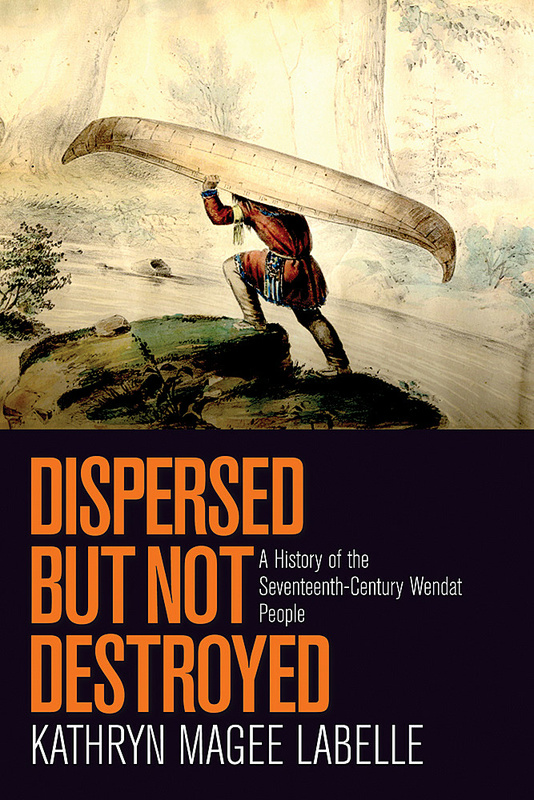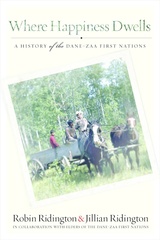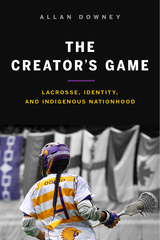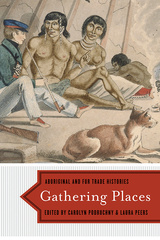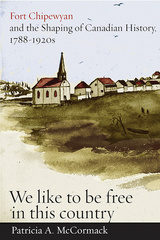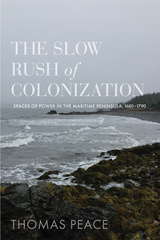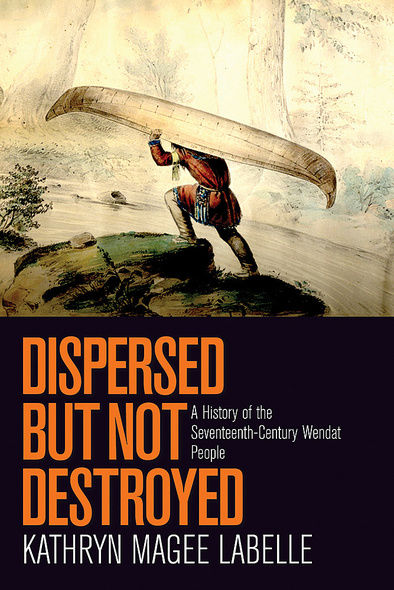
Dispersed but Not Destroyed
A History of the Seventeenth-Century Wendat People
Situated within the area stretching from Georgian Bay in the north to Lake Simcoe in the east (also known as Wendake), the Wendat Confederacy flourished for two hundred years. By the mid-seventeenth century, however, Wendat society was under attack. Disease and warfare plagued the community, culminating in a series of Iroquois assaults that led to the dispersal of the Wendat people in 1649.
Yet the Wendat did not disappear, as many historians have maintained. In Dispersed but Not Destroyed, Kathryn Magee Labelle examines the creation of a Wendat diaspora in the wake of the Iroquois attacks. By focusing the historical lens on the dispersal and its aftermath, she extends the seventeenth-century Wendat narrative. In the latter half of the century, Wendat leaders continued to appear at councils, trade negotiations, and diplomatic ventures – including the Great Peace of Montreal in 1701 – relying on established customs of accountability and consensus. Women also continued to assert their authority during this time, guiding their communities toward paths of cultural continuity and accommodation. Through tactics such as this, the power of the Wendat Confederacy and their unique identity was maintained. Turning the story of Wendat conquest on its head, this book demonstrates the resiliency of the Wendat people and writes a new chapter in North American history.
This beautifully written book will appeal to historians, anthropologists, Aboriginal studies scholars, and anyone interested in the history of the Wendat people.
Awards
- 2013, Winner - CSN-REC Book Prize, Canadian Studies Network – Réseau d’études canadiennes
- 2014, Shortlisted - Sir John A. Macdonald Prize, Canadian Historical Association
- 2014, Shortlisted - Aboriginal History Prize, Canadian Historical Association
- 2014, Winner - John A. Ewers Award, Western History Association
… the devastating Haudenosaunee attacks in 1649 have long shaped the ways scholars have narrated and understood the past of the Wendat people … So dramatic was this dispersal that many historians and anthropologists have portrayed it as the end of Wendat history and any meaningful Wendat peoplehood. Kathryn Magee Labelle forcefully challenges, and convincingly demolishes, this ‘discourse of destruction’ (p. 196) in her aptly-named Dispersed but Not Destroyed … A topnotch ethnohistory, Labelle’s book … draws a complex yet coherent picture of the vibrant Wendat diaspora. At the same time it prompts broader questions about power, society, and narrative in the study of seventeenth-century North America.
A nuanced and highly readable account of the Wendat people’s turbulent history, which challenges the notion of the Wendat’s disappearance as a cohesive community in the wake of the Iroquois attacks of the mid-seventeenth century.
Labelle’s dedication to an understanding of the Wendat/Wyandot people and their history, her meticulous scholarship, and her respectful consultation with the descendants of the diaspora have resulted in a fresh, unique, and holistic perspective on a centuries-old process of forced removal. This book contributes to an understanding of our past and as a result to our present, as we continue to mend these ancient wounds.
A Brief Chronology: Selected Wendat Events and Migration, 1400-1701
Introduction
Part 1: Resistance
1 Disease and Diplomacy: The Loss of Leadership and Life in Wendake
2 A Culture of War: Wendat War Chiefs and Nadowek Conflicts before 1649
Part 2: Evacuation and Relocation
3 Wendat Country: Gahoendoe Island and the Cost of Remaining Close
4 Anishinaabe Neighbours: The Coalition
5 The West: The Country of the People of the Sea
6 The East: The Lorettans
7 Iroquois Country: Wendat Autonomy at Gandougare, Kahnawake, and Ganowarohare
Part 3: Diaspora
8 Leadership: Community Memory and Cultural Legacy
9 Women: Unity, Spirituality, and Social Mobility
10 Power: Sources of Strength and Survival beyond the Dispersal
Epilogue: Reconnecting the Modern Diaspora, 1999
Appendix
Notes
Bibliography
Index

